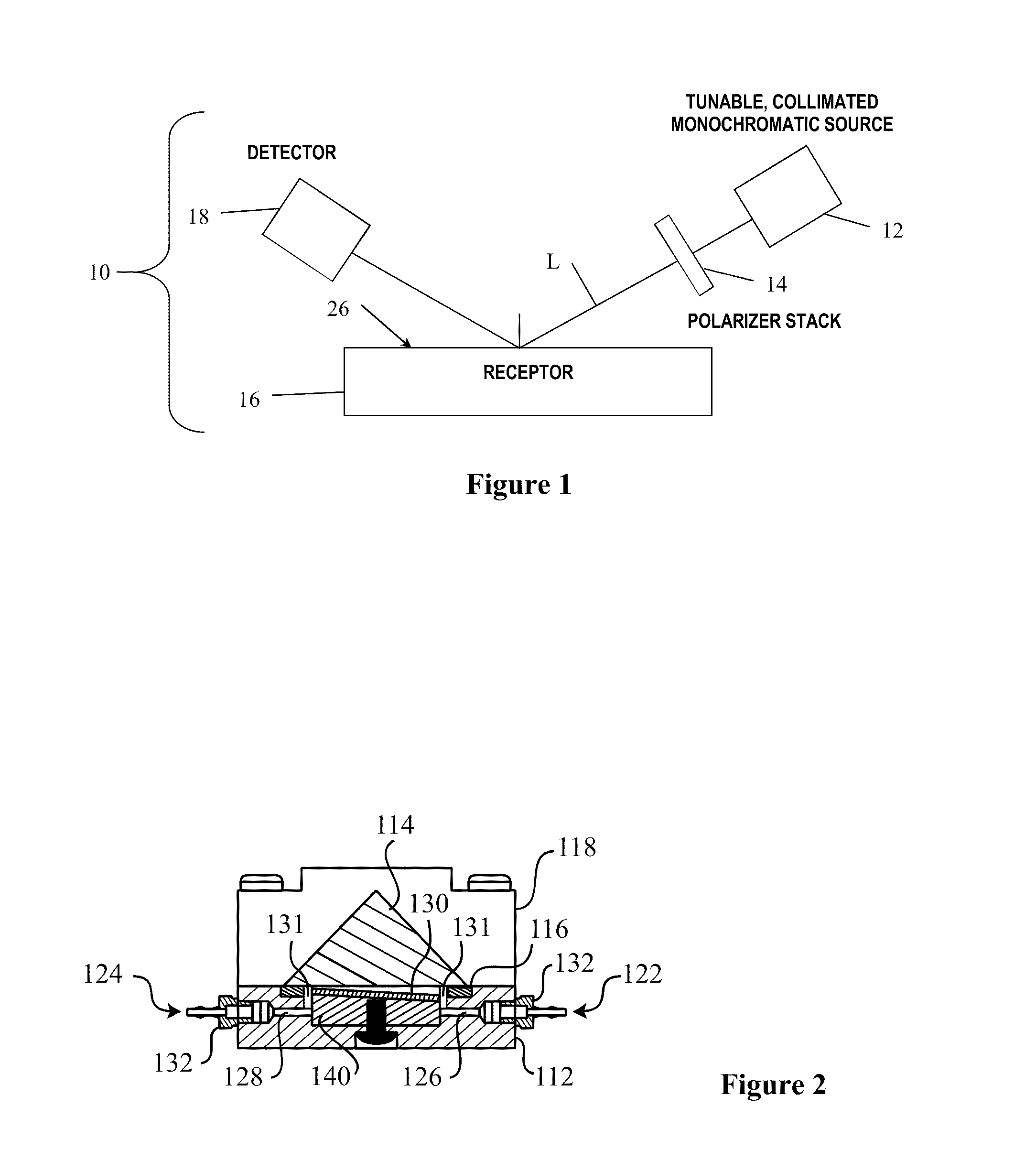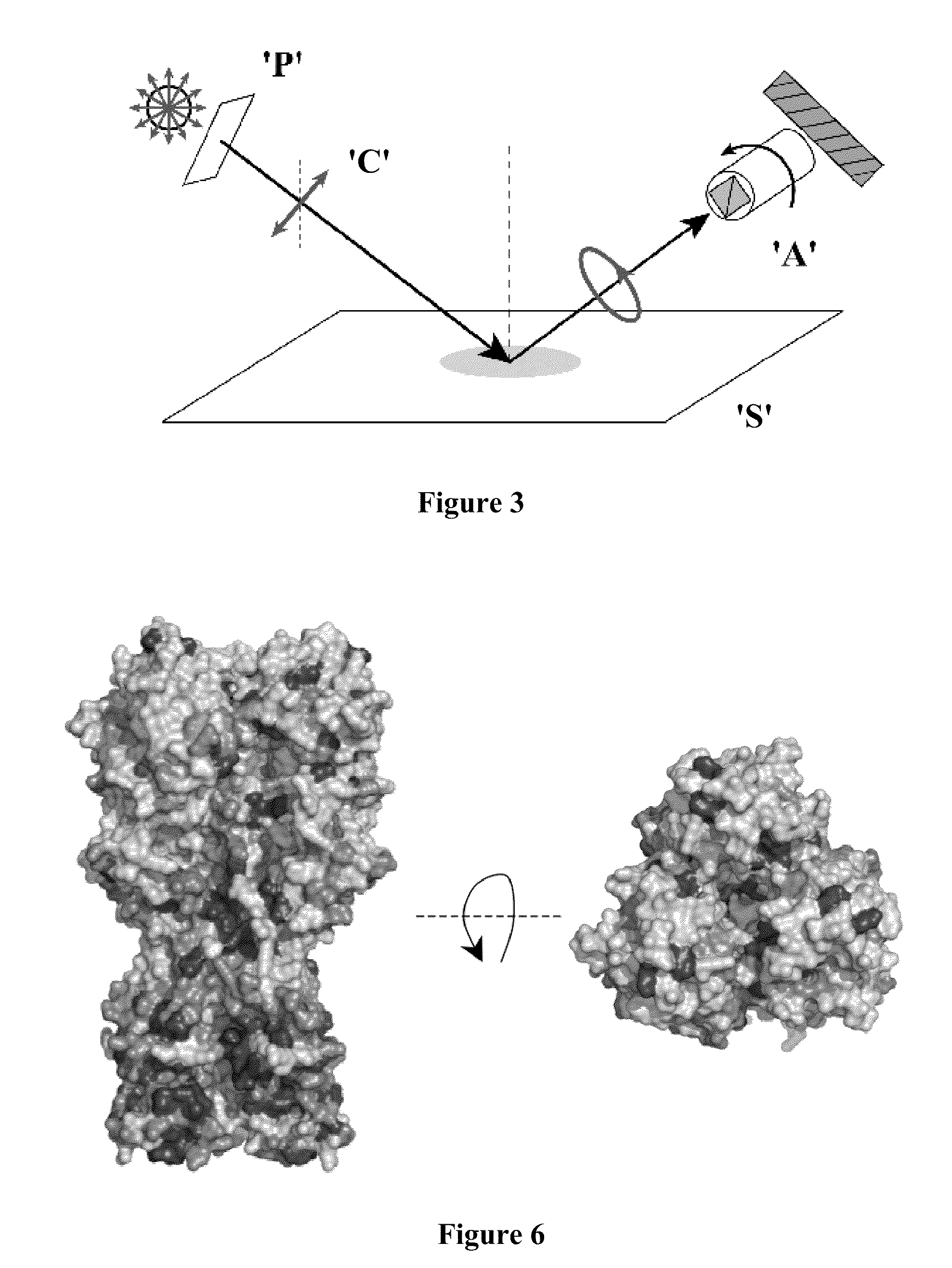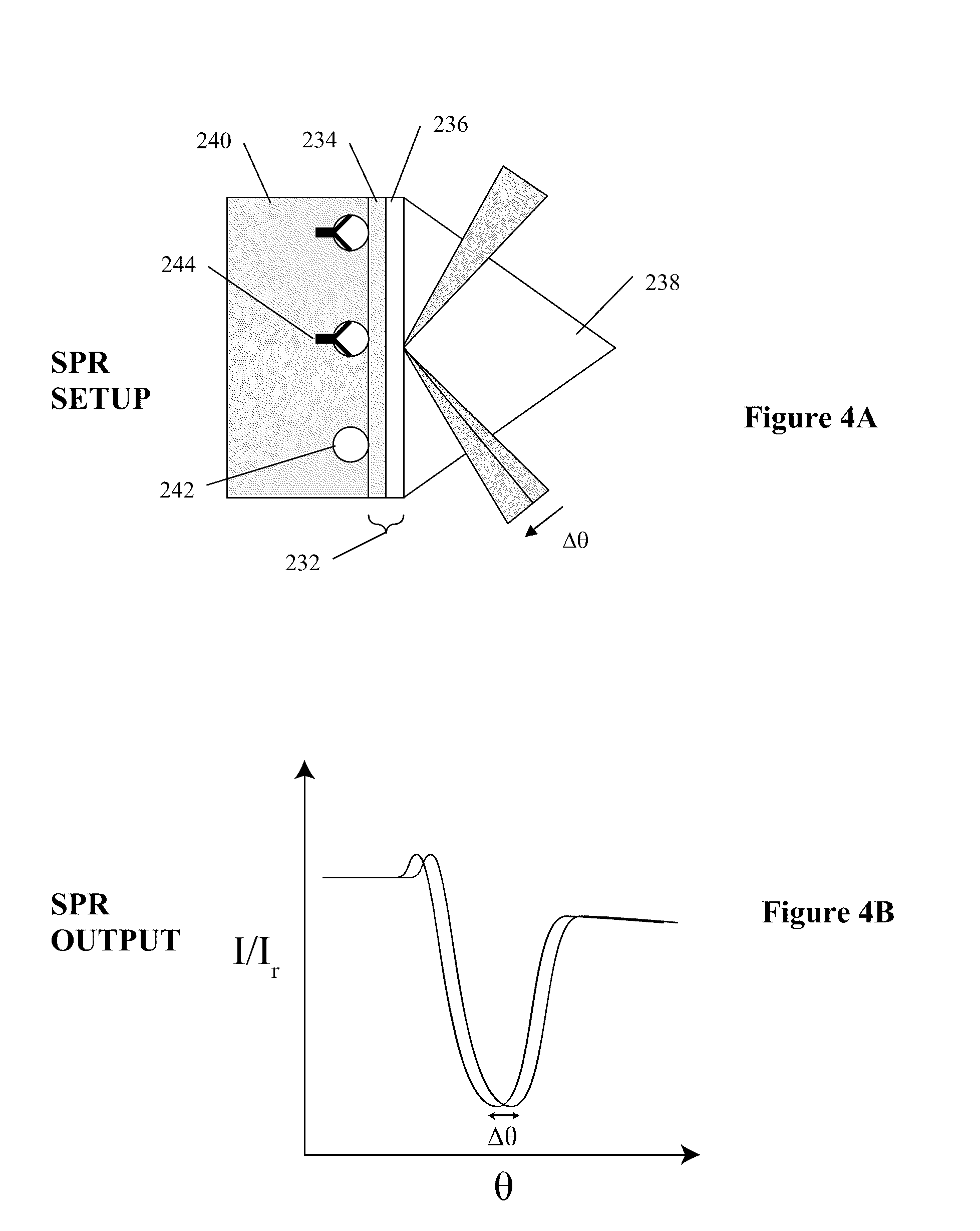Arrayed detector system for measurement of influenza immune response
- Summary
- Abstract
- Description
- Claims
- Application Information
AI Technical Summary
Benefits of technology
Problems solved by technology
Method used
Image
Examples
example 1
Manually Prepared Hemagglutinin Arrays
[0087]Initial experiments utilizing manually arrayed hemagglutinins at high concentrations were performed to study both the arrayability of these proteins and the proper starting chip thickness. At 100 μg / mL of A / Vietnam / 1203 / 2004(H5N1), an oxide of 1360 Å was determined to be the ideal film thickness to give suitable unbound probe intensities. While these spots were resolvable, an early experimental concern lay in the general amine attachment chemistry: HAs are homotrimeric and contain roughly 30 solvent accessible amines per monomer. The orientation of the immobilized molecule, therefore, will be completely random. The oligomeric state may ensure that there is a solvent accessible face available to bind to specific antibodies, but orientations that result in an effectively inactive sensor are also possible.
[0088]Attempts to observe signal changes upon the addition of an antibody specific to the A / Vietnam / 1203 / 2004(H5N1) hemagglutinin (enzyme p...
example 2
Viral Surveillance in Avian Flocks
[0095]Avian-to-human contact is the main route of H5N1 influenza virus transmission (Sandrock et al., “Clinical Review: Update of Avian Influenza A Infections in Humans,”Crit. Care 11:209 (2007), which is hereby incorporated by reference in its entirety). Therefore, the ability to monitor global poultry populations is critical for protecting human health. Moreover, surveillance is of agricultural and humane concerns as well: as of the end of 2006, over 240 million poultry have been preventatively destroyed to stem the spread of the avian influenza virus (World Organization for Animal Health, Avian influenza: Fact Sheet, accessed Apr. 16, 2008, which is hereby incorporated by reference in its entirety).
[0096]Samples of chicken H5N9 and H7N3 antisera were obtained from the Whittaker lab at the College of Veterinary Medicine, Cornell University. The H5N9 antiserum would serve as a substitution for avian H5N1, while the H7N3 virus has also shown the pot...
example 3
Larger Hemagglutinin Arrays
[0100]Arrays were prepared with the automated microarray printer using five hemagglutinin isoforms as follows: H1=A / New Calcdonia / 20 / 1999 (H1N1); H3=A / Wyoming / 3 / 2003 (H3N2); H5=A / Vietnam / 1203 / 2004 (H5N1); H6=A / Teal / Hong Kong / W312 / 1997 (H6N1); and H9=A / Hong Kong / 1073 / 1999 (H9N2). Several controls were also included on the array, including human serum albumin (HSA) as the “normalizing” negative control, and anti-fluorescein as a secondary negative control element. Antibodies to human IgG and human IgM serve as positive controls.
[0101]While the preliminary human antiserum results were successful in proving that AIR data could augment the results of traditional vaccination assays, there were two major limitations that could not be overcome by conventional manual arraying techniques: expanding the array to include an increased probe redundancy and removing the “human variable” by robotically controlling the volume and morphology of printed arrays. As was demons...
PUM
| Property | Measurement | Unit |
|---|---|---|
| Mass | aaaaa | aaaaa |
| Mass | aaaaa | aaaaa |
| Mass | aaaaa | aaaaa |
Abstract
Description
Claims
Application Information
 Login to View More
Login to View More - R&D
- Intellectual Property
- Life Sciences
- Materials
- Tech Scout
- Unparalleled Data Quality
- Higher Quality Content
- 60% Fewer Hallucinations
Browse by: Latest US Patents, China's latest patents, Technical Efficacy Thesaurus, Application Domain, Technology Topic, Popular Technical Reports.
© 2025 PatSnap. All rights reserved.Legal|Privacy policy|Modern Slavery Act Transparency Statement|Sitemap|About US| Contact US: help@patsnap.com



